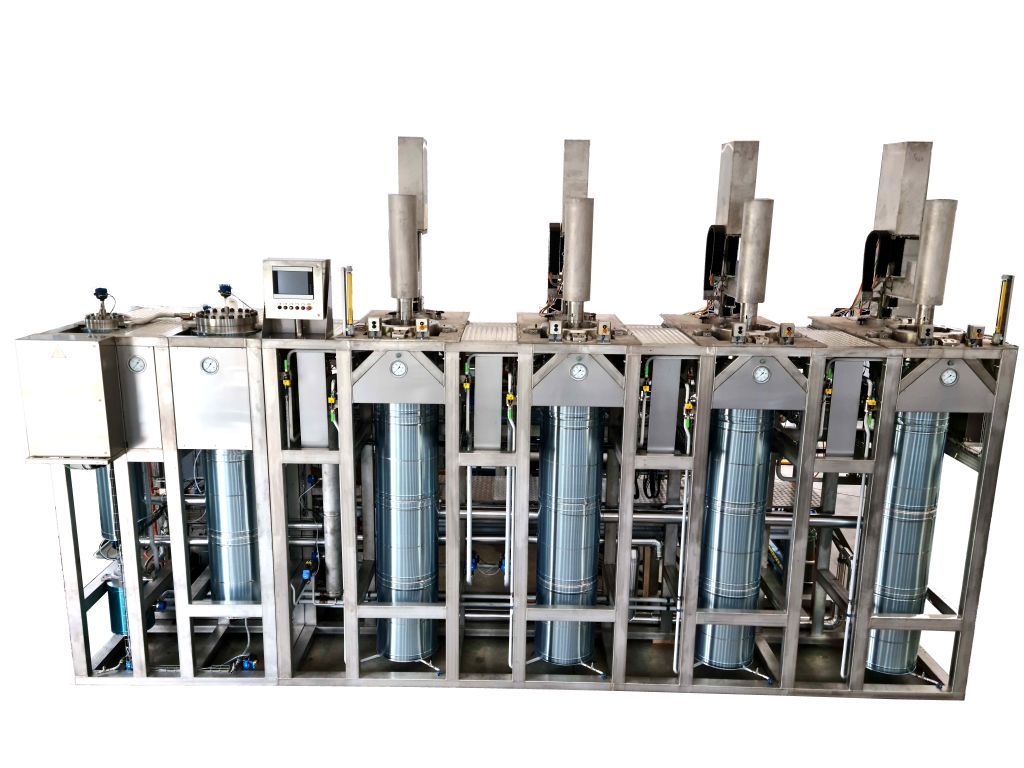Supercritical CO2 Extraction Process: What are the Latest Innovations in Techniques
Are you trying to understand the advantages of supercritical CO2 extraction and would like more information? Have you read that supercritical CO2 extraction offers many more benefits compared to traditional extraction techniques with organic solvents and want to know more? Or are you simply curious to discover the problems that CO2 extraction solves?
Here’s an article that will explain everything! Take a few minutes to read this article that we at Separeco, an Italian company that produces machines and systems for extracting compounds and natural materials through supercritical CO2 technology, have prepared to explain all the advantages for your industry of introducing this particular extraction technique.
In this article, we will see how supercritical CO2 extraction presents itself as a flexible process capable of completely replacing polluting organic solvents and obtaining purer extracts.
Happy reading!

How Supercritical CO2 Extraction Ensures Pure and Safe Extracts
The extraction of compounds from natural matrices is the most studied application of supercritical CO2, with several hundred scientific papers published. In fact, supercritical CO2 extraction (SFE) has many advantages over traditional extraction techniques with organic solvents:
- Es un sistema flexible process that allows continuous modulation of the solvent power and therefore the selectivity of the supercritical fluid.
- It allows the complete replacement of polluting organic solvents, which are complex to manage.
- It allows the simplification of the expensive secondary phase, both in terms of time and cost, necessary to purify extracts from unwanted substances like vegetable waxes.
Process engineers know that there are two of the most complex (and expensive) problems they face every day:
- The elimination of the solvent used for extraction.
- The elimination of unwanted substances.
In the first case, the elimination of the solvent occurs (almost like magic) simply by decreasing the pressure to bring the solvent from the supercritical state to the gaseous state, avoiding the huge gasification costs necessary in thermal processes when liquid solvents are used. In the second case, the great selectivity of the supercritical process and the presence of separators for the extract from the solvent (returned to the gaseous state) allow for very pure extracts, in some cases immediately marketable.
The advantages of supercritical CO2 compared to a liquid solvent can be summarized as follows:
- Greater transport speed of extracts in plant extraction processes, close to that of gases.
- Viscosity many orders of magnitude lower than liquid solvents.
- Diffusion coefficient in the material to be processed is many orders of magnitude greater than that of liquid solvents.
- Very fast permeability of the solvent (CO2 in the supercritical state) in the matrix with a drastic reduction of the process time.
- Low solvent costs: CO2 in this case is recycled by suppliers by “capturing” it in transformation processes, such as the production of fertilizers and manures, or is recycled by capturing it in wells where it is of geothermal origin.
- CO2 is non-toxic, non-flammable.
- Extraction and separation of compounds in a single process with a reduction of costs and times of both the main process (extraction of compounds) and the secondary process (solvent recovery and continuous reuse and in the same process of CO2 “cleaned” from the extracts).
Selectivity in the extraction of compounds through the modulation and modification of the solvent power by varying the operating conditions of pressure, temperature, and flow rate.
The absence of organic solvents used in the extraction guarantees the safety of the extracts, making them available in their pure state and in concentrated form. For this reason, the FDA has awarded the supercritical CO2 extraction process the GRAS attribute (Generally Recognized As Safe). Unfortunately, in the all-too-recent past, the presence of organic solvent residues in extracts has caused significant health problems for consumers. Fortunately, current legislation prohibits the use of organic solvents, such as hexane, which have carcinogenic and mutagenic characteristics.
The absence of residues in the extract and the purity of the extract makes supercritical CO2 the best choice for producing high-quality and safe extracts for the consumer.
In this article, we have seen, therefore, that the supercritical CO2 extraction process offers many advantages in terms of product quality and safety.
If you are in the leadership of a cosmetic or nutraceutical industry, or if your organization is in the food sector and you want purer and higher-quality extracts, contact us for a consultation by filling out the form below. We will be happy to help you identify and implement the right machinery for supercritical CO2 extraction.
